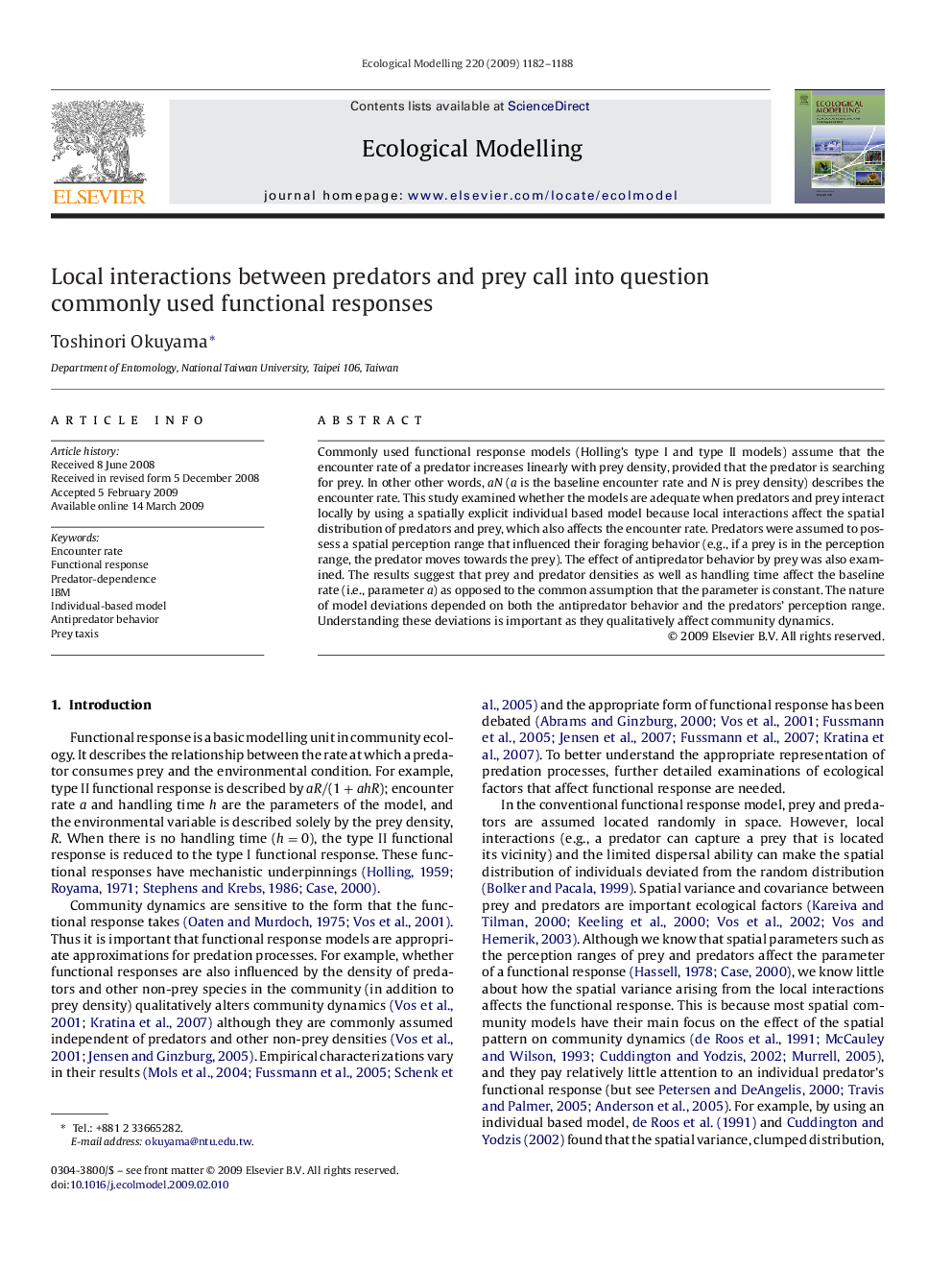| Article ID | Journal | Published Year | Pages | File Type |
|---|---|---|---|---|
| 4378099 | Ecological Modelling | 2009 | 7 Pages |
Commonly used functional response models (Holling’s type I and type II models) assume that the encounter rate of a predator increases linearly with prey density, provided that the predator is searching for prey. In other other words, aN (a is the baseline encounter rate and N is prey density) describes the encounter rate. This study examined whether the models are adequate when predators and prey interact locally by using a spatially explicit individual based model because local interactions affect the spatial distribution of predators and prey, which also affects the encounter rate. Predators were assumed to possess a spatial perception range that influenced their foraging behavior (e.g., if a prey is in the perception range, the predator moves towards the prey). The effect of antipredator behavior by prey was also examined. The results suggest that prey and predator densities as well as handling time affect the baseline rate (i.e., parameter a) as opposed to the common assumption that the parameter is constant. The nature of model deviations depended on both the antipredator behavior and the predators’ perception range. Understanding these deviations is important as they qualitatively affect community dynamics.
